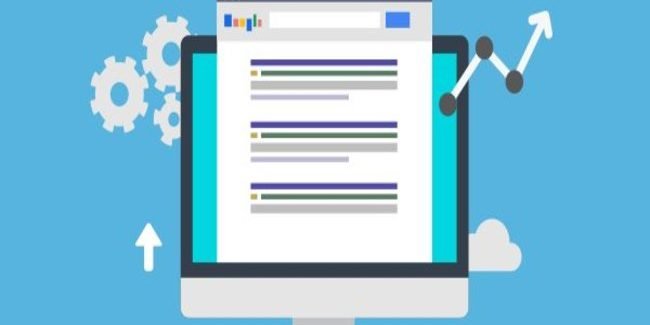Guide to Fixing Google Penalties for Law Firm Websites
BY Dipal Parmar

LISTEN
Law firm websites rely heavily on search engines for traffic. As a result, a Google penalty can hurt a site’s web presence by demoting its ranking among search results.
Google is designed to reward websites that follow its guidelines and punish those that try to outsmart the system.
Websites that violate basic SEO rules risk incurring penalties or being harmed by algorithm updates.
There are many different reasons a law firm website may be penalized, such as keyword stuffing or duplicate content. Although Google penalties can be challenging to diagnose and fix, it is possible to recover from them. Here are some key steps lawyers can take to get their law firm websites back on track and restore search engine traffic.
Diagnosing Google Penalties
Knowing what Google penalty or algorithm change your law firm website has been hit with will help determine a strategy for recovery. A website’s drastic drop in organic search traffic can sometimes arise from a Google algorithm update. Therefore, lawyers who see a change for the worst in their website rankings should review the search engine’s recent algorithm changes.
Google implements key updates designed to combat what is known as black-hat SEO techniques. For example, Penguin 4.0 of 2016 punishes bad links while the Intrusive Interstitial Penalty of 2017 cracks down on websites with interstitial or pop-up ads that hinder a webpage’s mobile responsiveness.
Diagnosing penalties involves checking your website’s backlinks, analyzing content and performing a complete site audit using various online tools that identify SEO violations. Lawyers should use a penalty indicator tool to find out what major Google penalties have hit their website in the past and whether it has recovered from them.
Ask yourself questions like has your organic search traffic dropped across all search engines or just Google? Have you recently made changes to your website? Determine whether your website uses any of the practices that are commonly known to trigger a Google penalty:
- Pop-up ads across the majority of web content
- Keyword stuffing where webpages go overboard with keyword usage in an effort to rank higher in search engine results
- Error-filled content that is of poor quality
- Bad link-building practices that aim to increase page authority
- Duplicate content that has been republished from different websites
- High load times and lack of mobile functionality
- Thin content in which webpages have very little text of value
A website can suffer a loss of ranking due to a Google algorithm or penalty. Although sometimes algorithm updates are mistaken for penalties, the outcome of both is likely to be the same — a substantial and devastating loss of organic search traffic.
Websites that receive a Google manual penalty will be informed of it via Google Webmaster Tools. Once the reported violation is fixed, the website owner must submit a Reconsideration Request. An algorithm-related issue, on the other hand, does not require the website owner to contact Google. Websites that are suffering from an algorithm change should gather as much information about the update as possible in order to resolve the problem.
Fixing Google Penalties
After a law firm website’s Google penalties are identified, they must be fixed so that the site’s ranking and traffic can be restored. While the approach will differ depending on each individual problem, here are some ways to solve common issues that are known to trigger Google penalties.
Websites that are not mobile-friendly need to be redesigned so they are responsive. If your website has been penalized for duplicate content, it should be evaluated using a plagiarism checker. Doing so will help find webpages that have content identical to other sites on the web. Delete such material and ensure your web content is unique going forward.
Google is known to penalize websites that engage in keyword stuffing. Not only does the practice create a negative user experience, but it also violates search engine guidelines. Keyword density is no longer the most important factor for rankings. Search engines and their algorithms have evolved to place emphasis on creating high-quality, informative content that meets the needs of searchers. As a result, law firms should take extra care with the placement of keywords so that they flow naturally within content. Lawyers can recover from the penalty by editing phrasing in existing pages and using keyword counting tools to monitor their keyword usage for future content.
One of the most common Google penalties is for unnatural links to and from websites. Any links that intend to manipulate a website’s ranking in search results are in clear violation of Google’s Webmaster Guidelines. Submitting your law firm website to link directories or buying links are all examples of bad SEO tactics punishable by Google. Law firm websites hit by this penalty should audit their links to identify any that may violate Google’s rules. Remove or disavow unnatural links manually if necessary.
Law firm websites can also be penalized for having what is known as thin content, or content with little value. Lawyers can recover from this penalty by identifying and eliminating auto-generated or low-quality content from their websites. Replace pages with content that is useful and valuable to potential clients. In addition, consider adding elements like optimized images, videos, infographics and ebooks that can increase engagement from visitors who find your website via an organic search.
After fixing their website issues, lawyers should submit a Reconsideration Request to Google to regain their position among search results. While it is possible to fix Google penalties, remember that the best strategy is to be proactive and avoid them in the first place. Law firms seeking to build a solid web presence should ensure they follow Google Webmaster Guidelines and stay abreast of algorithm updates, otherwise they may risk getting penalized and losing valuable web traffic.
LATEST STORIES



